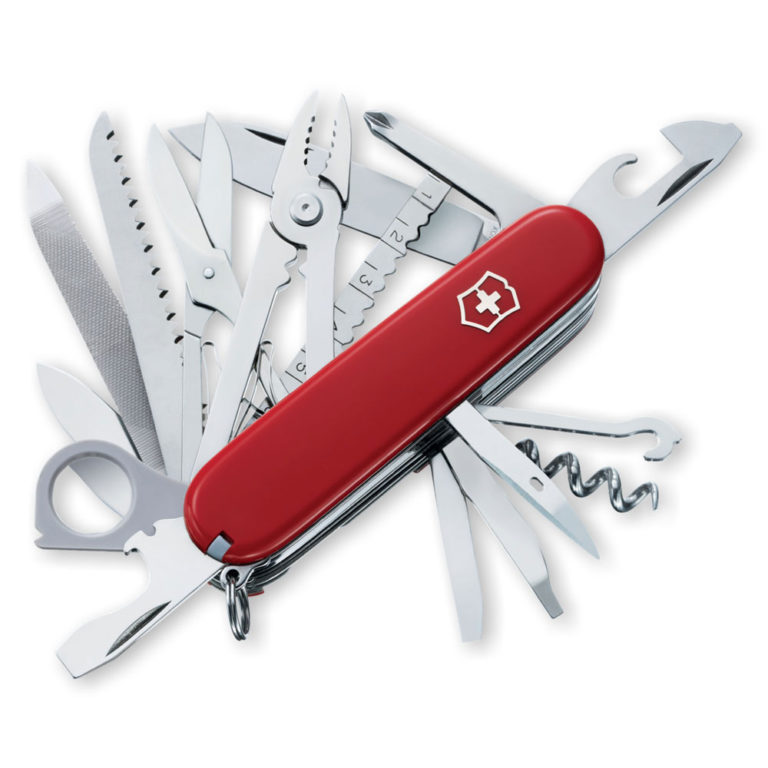
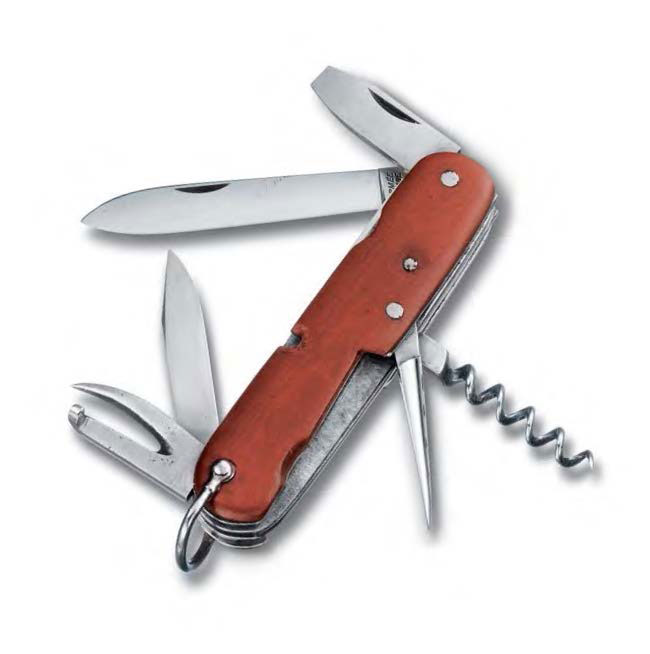
the model known today as the Spartan, the most popular Swiss Army knife.
Rarely does a single brand, style or look set the standard for an entire genre in the knife industry, let alone hold its place for decades with no sign of a loosening grip. Just say the words “Swiss Army knife” and the image is clear and constant.
The classic red handle emblazoned with the shield and cross of its land of origin render the Swiss Army knife (SAK) instantly recognizable, while its multifunction versatility makes it indispensable for those who carry it and rely on it in a variety of situations.
Cut, slice, tighten/loosen a flat- or Phillips-head screw, punch, file, open a can or bottle and even sign your name, the pride of Victorinox and the trademark of the Swiss Army is the versatility that is found nowhere else.
Origins in the American Market
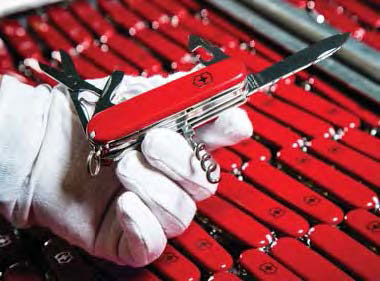
Like every icon in any field, the SAK is surrounded in legend and lore. The consensus is that the knife gained widespread appeal during and after World War II as Allied soldiers brought them home, and those who saw the knives clamored for one of their own.
American military personnel came to further love the SAK when it became available at the nearest base PX (post exchange), and sales are said to have exploded.
The History of Swiss Army Knives
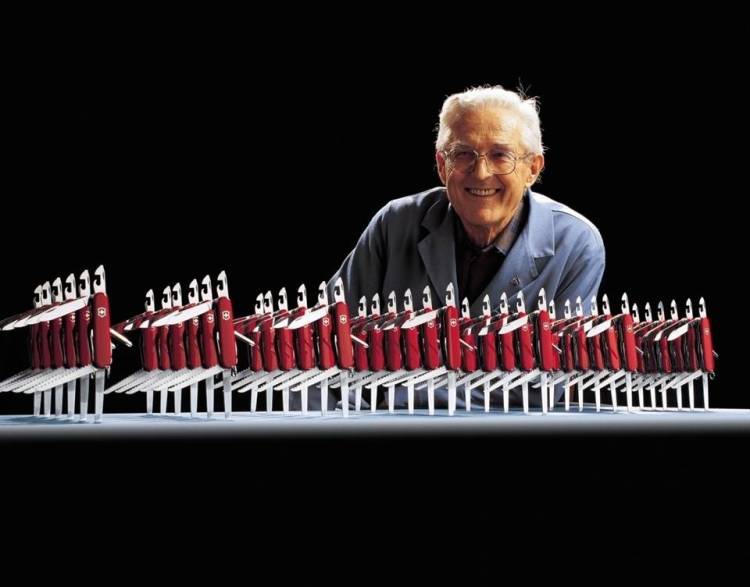
Of course, there was a tinge of controversy related to the “first” Swiss Army knives. In 2005, Victorinox went a long way in closing the book on that discussion with the acquisition of rival Wenger, followed by the consolidation of the two brands into the single Victorinox label in 2013.
Victorinox Global Chief Executive Officer Charles Elsener likes to tell the story of his family’s development of the early SAK.
“In 1897, founder Karl Elsener created his ‘Officer’s and Sports Knife,’” Charles explained, “and registered it legally June 12 of that year. He also was responsible for the iconic design, which has not changed to this day. From 1897 to 1937, the handles were made of red fiber. Functions of the knife included big blade, small blade, can opener, corkscrew and reamer. The name of this model today is the ‘Spartan.’”

In 1937 the knife handles changed to celluloid, and since 1971 the material used is Cellidor. The red color was probably chosen for the red in the Swiss flag and also for the Swiss canton [district] of Schwyz—and probably to help the owner find his treasured possession when it falls on the ground!
Popular Swiss Army Knife Models
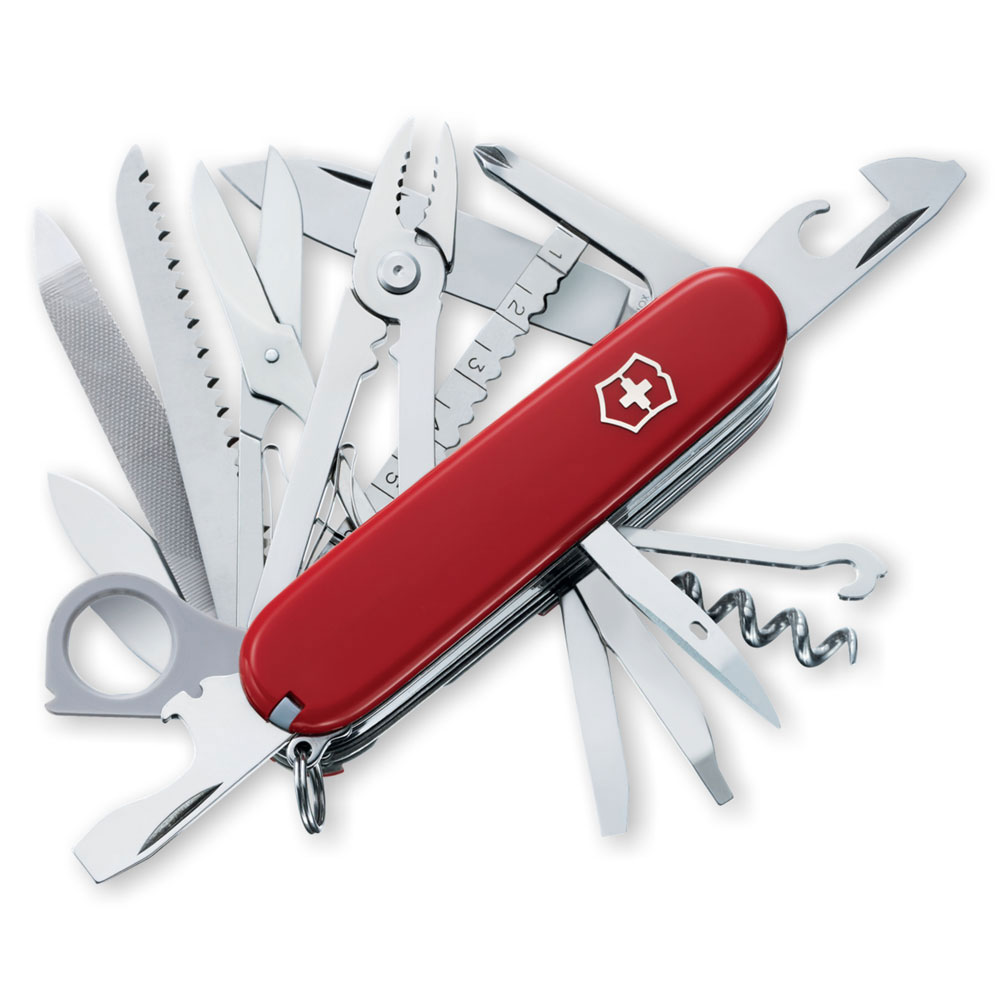
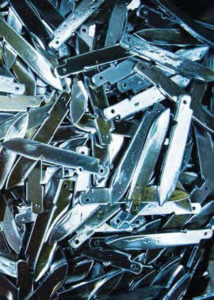
per day and a staggering 13 million pieces annually.
According to Elsener, the most popular SAK in the company’s early days was the Spartan. In 1902, a wood saw and scissors were added. The new model with scissors was christened the Climber, and the Huntsman included both the wood saw and scissors.
As more and more tools were added, the flagship knife became the SwissChamp, introduced in 1986 with a grand total of 33 functions.
“The fourth bestseller is our smaller Classic keyring model,” Elsener added, “and these five bestsellers have been the same since their introduction.”
Charles confirms that American soldiers popularized the SAK during World War II and are responsible for its name today since they had difficulty pronouncing it in German as the “Schweizer Offiziers-und Sportsmesser.”
Today, Victorinox produces 60,000 SAKs per day and a staggering 13 million pieces annually, achieving these numbers consistently.
A Humble Knife
BLADE Magazine Cutlery Hall-Of-Fame© member Tim Leatherman, developer of the popular Leatherman Tool, gave the introduction speech when Charles Elsener’s father, Carl, was inducted into the Cutlery Hall Of Fame in 2011.
Charles told of a modest, unassuming man who wore a workman’s smock while at the company.
“One day Carl happened to be at the loading dock when a truck pulled in and everyone else was at lunch,” Tim smiled. “The driver saw Carl and said, ‘Hey you! Help me unload this truck.’ Without saying a word, Carl did. Only when another worker returned from lunch and saw what was happening did the mortified driver realize what he had done. But Carl took no offense at all. He was still his humble self.”
An Unassailable Knife
The humble knife the Elsener family put together also has risen without unnecessary fanfare to the height of fame and cutlery glory. Leatherman sees an unassailable place in knife history for the SAK.
“Victorinox with the Swiss Army knife anchors the knife industry,” he asserted. “One category of products within the cutlery industry is ‘pocket-carried knives,’ which has three subcategories—common pocketknives, tactical knives and multipurpose pocketknives. And deservedly so. The design deserves every bit of recognition it has received. I know firsthand how hard it is to make a knife or tool without a cosmetic defect. And I have never seen a cosmetic defect in a Swiss Army knife. The Swiss Army knife is recognized and coveted worldwide.
“I was very much aware of the Swiss Army knife as I was designing the Leatherman Tool,” Tim continued. “So much so that in one of my prototypes I cannibalized a pair of scissors from a Swiss Army knife to put in my tool. However, my design diverged away from the Swiss Army knife because in a Swiss Army knife the blade is the central feature, and I wanted a pair of pliers to be the central feature of my Leatherman Tool.”
The Swiss Army Knife Collectors Society
While satisfying the needs of the businessman, blue-collar worker and outdoorsman, the SAK also has cultivated a devoted group of collectors. Doug Dillman, owner of Freeport Knife Co. in Freeport, Maine, leads the Swiss Army Knife Collectors Society, which was founded in 2000 by avid collector Dan Jacquart.
“The club currently has about 150 members,” Dillman commented. “Our objective since the beginning has been to encourage and support collectors who share a passion for both collecting Swiss Army knives and educating members about the many changes to the product and the factory’s history since its creation in 1884. We largely accomplish this through the publication of a biannual newsletter. We try to offer articles about changes to the many models over the years, new product introductions, and special-edition models. Our last issue included a tang stamp chart to help members determine the age of a knife.”
Insights for Swiss Army Knife Collectors
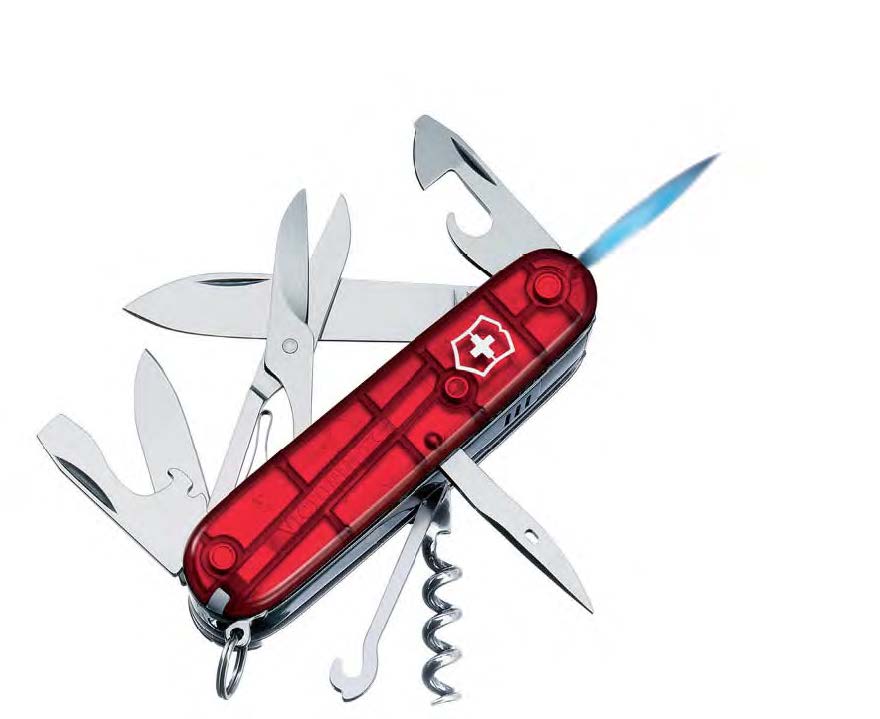
A collector for 30 years, Dillman has seen a number of SAKs appreciate in value.
“Old-style Soldier’s knives prior to 1954 can be found anywhere from $100 to more than $1,000, depending of course on condition,” he commented. “Very early ones from the 1890s with black-stained oak handles are certainly the most valuable. Many people also try to collect specific Soldier’s knives with specific-year date stamps. Knives that are highly desirable for collectors are often models made for only a short time, such as the Swissflame series from the late 1990s and early 2000s. These were unique in that they included a butane lighter.”
Other highly prized collectibles include the Scientist, produced in the 1980s and ’90s, and the Motorist with its metal inlay of St. Christopher. Knives made first as presentation gifts for four American presidents sell for $50 to more than $100.
Chris Lubkemann wrote The Victorinox Swiss Army Whittling Book, published in 2015, which already has been translated into Swiss, German, Dutch and Spanish. His use of the Swiss Army Tinker for carving led to the research and the publication of the book.
Actually Lubkemann carved for many years with an assortment of other knives.
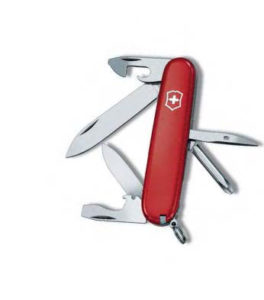
The Tinker had been given to him as a gift and stayed put on a shelf. As he recalled, “My [previous knife] developed a lot of play between the handle and the blade, to the point where it was no longer a viable carving tool. I’m sure I could have gone out and bought another, but conservative spender that I am, I decided to pull out my Swiss Army Tinker and see how it worked.
“The rest is history. Not having any personal previous experience with Swiss Army knives, I was immediately impressed with the tool. While the blades were stainless they took an edge well, and for my special purposes maintained the edge well.”
Chris met Brian Huegel of Country Knives in Lancaster, Pennsylvania, and Brian in turn knew Carl Elsener. At Brian’s suggestion, Chris contacted Carl, who demonstrated an interest in the whittling book, which became a reality with the support of both Victorinox and Fox Chapel Publishing.
“I was a fan of the knife long before I had any contact with Victorinox,” Chris concluded. “The more I used my Swiss Army knife the more I liked it and recommended it, especially the Tinker model, which is widely available, reasonably priced and incredibly useful—for much more than carving!”
“The Value Given is Much, Much Higher than the Price Charged”
Tim Leatherman remembers a trip to Europe that he made about 30 years ago.
“I had occasion to be near Ibach, Switzerland, so, uninvited, I parked well away and walked up to the entrance of Victorinox’s headquarters and factory. I was totally in awe,” he said. “I felt like I had found the Holy Grail. I remember they had a display on the outside wall of a Swiss Army knife broken down into its components. I must have studied it for an hour. I was too awestruck to knock on their door. The key to the success of any knife is that the value given be more than the price charged. With the Swiss Army knife the value given is much, much higher than the price charged, and the price is very reasonable.”
All images courtesy of Victorinox.
Find Swiss Army Knives at BLADE Show 2018
 The world’s largest and foremost knife show, BLADE Show, is taking place June 1-3 in Atlanta. You’ll find the planet’s most innovative knifemakers in one spot. Learn more about how to attend BLADE Show 2018 here.
The world’s largest and foremost knife show, BLADE Show, is taking place June 1-3 in Atlanta. You’ll find the planet’s most innovative knifemakers in one spot. Learn more about how to attend BLADE Show 2018 here.
 NEXT STEP: Download Your Free KNIFE GUIDE Issue of BLADE Magazine
NEXT STEP: Download Your Free KNIFE GUIDE Issue of BLADE Magazine
BLADE’s annual Knife Guide Issue features the newest knives and sharpeners, plus knife and axe reviews, knife sheaths, kit knives and a Knife Industry Directory.Get your FREE digital PDF instant download of the annual Knife Guide. No, really! We will email it to you right now when you subscribe to the BLADE email newsletter.







I have two SAK with black handles with a time-piece in the handle. Never used or sharpened/ Have original plastic box and even the cardboard over box. Purchased in Switzerland mid 90s. Would like to sell. Contact me if interested or want photos.. Thank you.
I have two SAK with black handles with a time-pieces in the handle. Never used or sharpened/ Have original plastic box and even the cardboard over box. Purchased in Switzerland mid 90s. Would like to sell. Contact me if interested or want photos.. Thank you.
The other day, i went into this small cigar shop to buy a cigar. The salesman Dave had on the counter what looked like a Swiss Army Knife. However, it had a wooden handle. I know they now make sak with wooden handles and in different colors. When asked if I could look at it, Dave told me I could have it. It was a promotional knife from Camacho cigars. Then I thought, ” oh well it’s not going to be well made. After a while the blade will be loose and so on.” It had the name of the cigar stamped on one side very lightly, but you could feel it:; the name was kind of engraved. Dave was given 10 of those knives to give out. by the salesman who visited the shop. Well if someone buys a certain number of Camacho cigars or boxes, they get a free Swiss Army Knife. These cigars are expansive.
That night I examined the knife, and it seemed well made. It had one blade, a can opener, a bottle opener/screwdriver, wood saw,, sissors , and a flashlight, all well made. On the other side was a cork screw, a Phillips screwdriver, a nail file, a reamer (I think, but it wasn’t sharp. Or is it supposed to be that way?) and a sowing all. Well a skinny blade with a hole at the tip. As I said, everything seemed well made. Even the wood saw seemed like it could cut a somewhat thick branch from a tree. I likw the knife.
I have used Swiss Army knifes since 1955 when one was given to me for my 18 birthday and graduation. Over the years I’ve los numerous plus when flying taken at the airport. With the age of cell phones I have often wished my Swiss Army knife had a beeper to help me find it.
Hope before I die you will have something to help find them when lost.
Thank you for such a good quality prosucts.
David Kuhn
Retired in Flores,Peten, Guatemala
I have two old knives which were belonged to my grandfather. I believe that those were two vintage Swiss Army knives. I believe he purchased those knives in Europe late 1800. I would like to send you pictures.